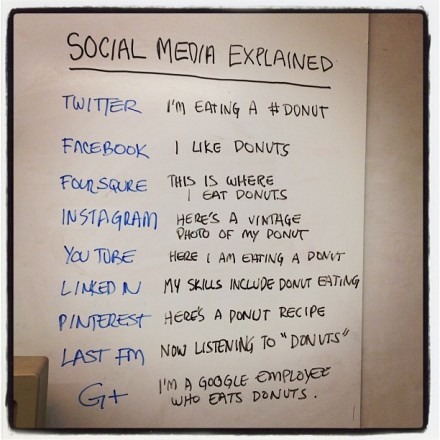1. Don’t ignore complaints.
It’s recently been reported in the press that many companies are struggling to deal with complaints that they get via social media. Strive to make your company the exception to this rule! Social media complaints are in no way trivial, they are public and anyone doing a search for your name has a chance of seeing them.
Reply to the comment saying you’re sorry that they feel this way and to email (provide a direct address) you so you can resolve the problem. Responding quickly suggests that your business is ultra-responsive and listens to what its customers have to say.
2. Don’t delete other people’s comments.
It makes you look like you have something to hide. Part of the beauty of social media is that it is supposed to be authentic and transparent – deleting comments undermines this.
Treat negative comments in the way you would a complaint. Address the situation head-on and with transparency. This will earn you more brand loyalty and shows others that you believe in your product and service, you care about your customers, and you have nothing to hide.
3. Don’t ‘sell sell sell’.
You’re on a social network after all! The purpose of social networking should not be to achieve direct sales; it should be to develop a community of people who are genuinely interested in your brand and what it has to say. This doesn’t mean they will all spend money on your brand, but if they like what you say and share it with other people, then other people might.
Ultimately, social media is about building trust in a brand. The more you communicate and create dialogues, the more you will personify your brand and start to grow a reputation in your area.
4. Don’t ask people to share.
If you are posting high quality and interesting content, you shouldn’t need to ask people to share it. Filling up your Twitter stream with ‘please RT’ messages isn’t going to engage anyone, just annoy them. It may seem like a shortcut to build up your followers, but in the world of social media there’s no such thing.
5. Don’t make it personal.
If your Twitter account is under the name of your business, make sure you keep it professional. There’s nothing worse than reading personal conversations when you have followed a company or brand to receive updates about the business.
Obviously, if the Twitter account is set up under your name there’s a different etiquette. However, it goes without saying that you still need to think carefully about what you’re posting and how it will reflect on your brand.
6. Don’t be rude or inappropriate.
This one may sound like a bit of a no-brainer, but it’s surprising how many people post content that is insensitive or others may find offensive. Think about what you’re posting and how your audience will respond to it.
Also, your social media pages will appear on search engine results so it’s not just your followers you’re posting to, it’s anyone who is researching your company, area of expertise, location – basically anything you can be identified with.
7. Don’t sign up for every single social network.
It’s better to represent your brand through a select number of carefully selected channels, and represent it well, rather than have an account on every social network under the sun and not be able to manage them properly. Choose 3-4 outlets, and sign up for a social media dashboard such as Hootsuite to make it easier to manage them.
Don’t sign up for something just because someone has said it’s the ‘next big thing’. Do some research; think about the purpose of the network and have a look at how other businesses are using it. If it’s not going to add anything to your social media presence, then don’t bother!

8. Don’t have the same strategy across all platforms.
Different social networks have different purposes – this seems obvious, but there is a tendency for companies to use the same strategy across all platforms. Whether this is to save time and resources or just lack of experience is irrelevant, but it is important that to acknowledge that each network requires different types of posts to engage followers. There’s nothing wrong with telling each social network the same thing, you just need to tailor the information (see diagram!).
9. Don’t forget your key messages.
Although posts for individual networks need to be different, your ‘voice’ needs to be consistent. Make sure your accounts include the same business information, have the same profile image and follow the same theme, both visually and in terms of content.
Your key messages make up the basis of your marketing communications strategy – so don’t forget to consider them whenever you send out any social media posts.
10. Don’t underestimate social media.
And last, but by no means least, do not underestimate the power of social media! You never know who is looking at your posts at any specific time or who is searching for your company or name. Social media messages can be seen by an unlimited number of people, so think about what you’re posting before you share it with the world!

